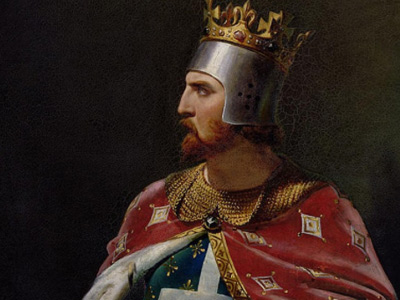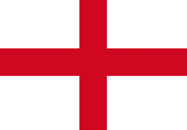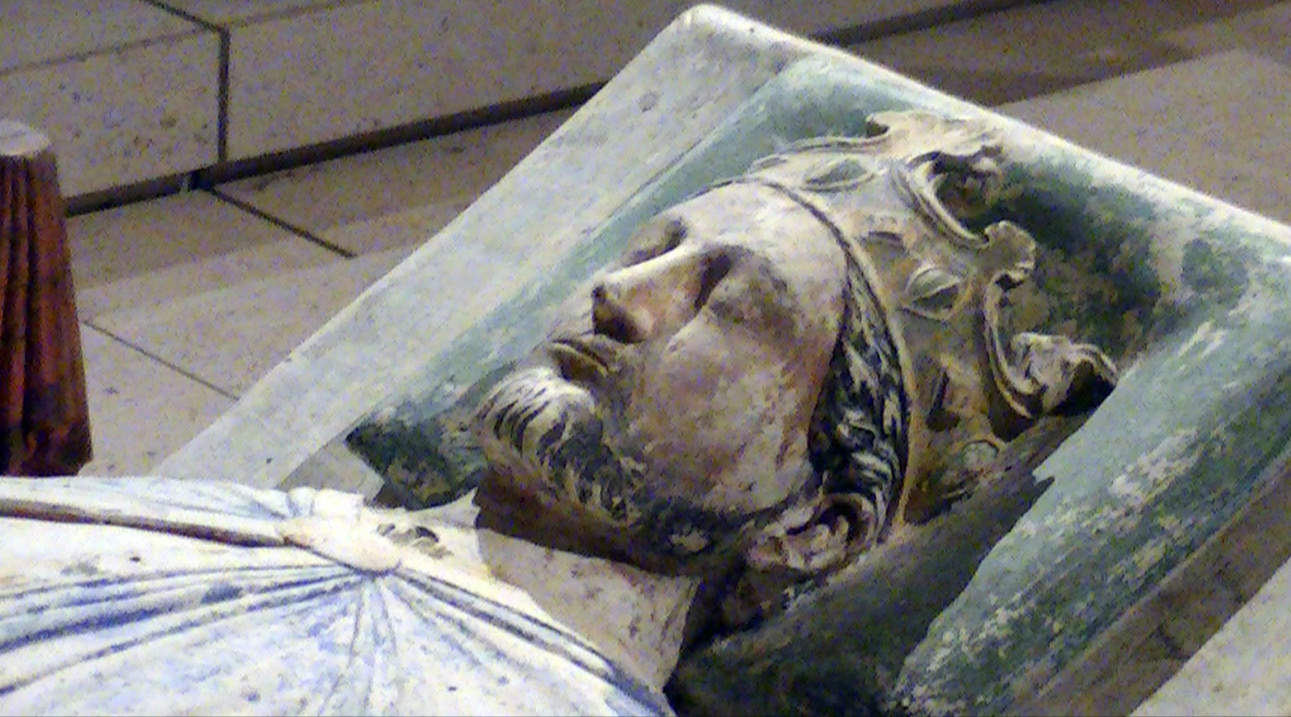Richard I of England (1157-1199)
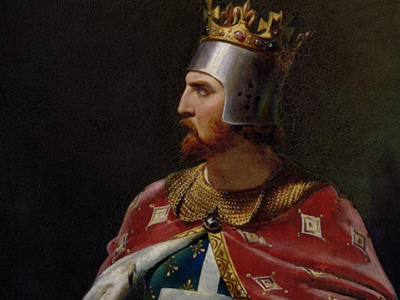
Revolt against Henry II
According to Ralph of Coggeshall, Henry the Young King instigated rebellion against Henry II; he wanted to reign independently over at least part of the territory his father had promised him, and to break away from his dependence on Henry II, who controlled the purse strings. There were rumors that Eleanor might have encouraged her sons to revolt against their father.
Henry the Young King abandoned his father and left for the French court, seeking the protection of Louis VII; his younger brothers, Richard and Geoffrey, soon followed him, while the five-year-old John remained in England The Kingdom of England was a sovereign state on the island of Great Britain from about 927, when it emerged from various Anglo-Saxon kingdoms, until 1 May 1707, when it united with Scotland to form the Kingdom of Great Britain. The Viking invasions of the 9th century upset the balance of power between the English kingdoms, and native Anglo-Saxon life in general. The English lands were unified in the 10th century in a reconquest completed by King Æthelstan in 927.. Louis gave his support to the three sons and even knighted Richard, tying them together through vassalage. Jordan Fantosme, a contemporary poet, described the rebellion as a "war without love".
The Kingdom of England was a sovereign state on the island of Great Britain from about 927, when it emerged from various Anglo-Saxon kingdoms, until 1 May 1707, when it united with Scotland to form the Kingdom of Great Britain. The Viking invasions of the 9th century upset the balance of power between the English kingdoms, and native Anglo-Saxon life in general. The English lands were unified in the 10th century in a reconquest completed by King Æthelstan in 927.. Louis gave his support to the three sons and even knighted Richard, tying them together through vassalage. Jordan Fantosme, a contemporary poet, described the rebellion as a "war without love".
The three brothers made an oath at the French court that they would not make terms with Henry II without the consent of Louis VII and the French barons. With the support of Louis, Henry the Young King attracted many barons to his cause through promises of land and money; one such baron was Philip, Count of Flanders, who was promised £1,000 and several castles. The brothers also had supporters ready to rise up in England. Robert de Beaumont, 3rd Earl of Leicester, joined forces with Hugh Bigod, 1st Earl of Norfolk, Hugh de Kevelioc, 5th Earl of Chester, and William I of Scotland for a rebellion in Suffolk. The alliance with Louis was initially successful, and by July 1173 the rebels were besieging Aumale, Neuf-Marché, and Verneuil, and Hugh de Kevelioc had captured Dol in Brittany. Richard went to Poitou and raised the barons who were loyal to himself and his mother in rebellion against his father. Eleanor was captured, so Richard was left to lead his campaign against Henry II's supporters in Aquitaine on his own. He marched to take La Rochelle but was rejected by the inhabitants; he withdrew to the city of Saintes, which he established as a base of operations.

These books are available for download with Apple Books on your Mac or iOS device
In the meantime Henry II had raised a very expensive army of more than 20,000 mercenaries with which to face the rebellion. He marched on Verneuil, and Louis retreated from his forces. The army proceeded to recapture Dol and subdued Brittany. At this point Henry II made an offer of peace to his sons; on the advice of Louis the offer was refused. Henry II's forces took Saintes by surprise and captured much of its garrison, although Richard was able to escape with a small group of soldiers. He took refuge in Château de Taillebourg for the rest of the war. Henry the Young King and the Count of Flanders planned to land in England to assist the rebellion led by the Earl of Leicester. Anticipating this, Henry II returned to England with 500 soldiers and his prisoners (including Eleanor and his sons' wives and fiancées), but on his arrival found out that the rebellion had already collapsed. William I of Scotland and Hugh Bigod were captured on 13 and 25 July respectively. Henry II returned to France The Kingdom of France is the historiographical name or umbrella term given to various political entities of France in the medieval and early modern period. It was one of the most powerful states in Europe since the High Middle Ages. It was also an early colonial power, with possessions around the world. Colonial conflicts with Great Britain led to the loss of much of its North American holdings by 1763. The Kingdom of France adopted a written constitution in 1791, but the Kingdom was abolished a year later and replaced with the First French Republic. and raised the siege of Rouen, where Louis VII had been joined by Henry the Young King after abandoning his plan to invade England. Louis was defeated and a peace treaty was signed in September 1174, the Treaty of Montlouis.
The Kingdom of France is the historiographical name or umbrella term given to various political entities of France in the medieval and early modern period. It was one of the most powerful states in Europe since the High Middle Ages. It was also an early colonial power, with possessions around the world. Colonial conflicts with Great Britain led to the loss of much of its North American holdings by 1763. The Kingdom of France adopted a written constitution in 1791, but the Kingdom was abolished a year later and replaced with the First French Republic. and raised the siege of Rouen, where Louis VII had been joined by Henry the Young King after abandoning his plan to invade England. Louis was defeated and a peace treaty was signed in September 1174, the Treaty of Montlouis.
When Henry II and Louis VII made a truce on 8 September 1174, its terms specifically excluded Richard. Abandoned by Louis and wary of facing his father's army in battle, Richard went to Henry II's court at Poitiers on 23 September and begged for forgiveness, weeping and falling at the feet of Henry, who gave Richard the kiss of peace. Several days later, Richard's brothers joined him in seeking reconciliation with their father. The terms the three brothers accepted were less generous than those they had been offered earlier in the conflict (when Richard was offered four castles in Aquitaine and half of the income from the duchy): Richard was given control of two castles in Poitou and half the income of Aquitaine; Henry the Young King was given two castles in Normandy; and Geoffrey was permitted half of Brittany. Eleanor remained Henry II's prisoner until his death, partly as insurance for Richard's good behaviour.
HISTORY
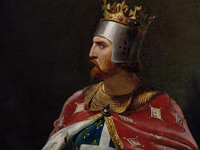
RESOURCES
This article uses material from the Wikipedia article "Richard I of England (1157-1199)", which is released under the Creative Commons Attribution-Share-Alike License 3.0.
© Stories Preschool. All Rights Reserved.
